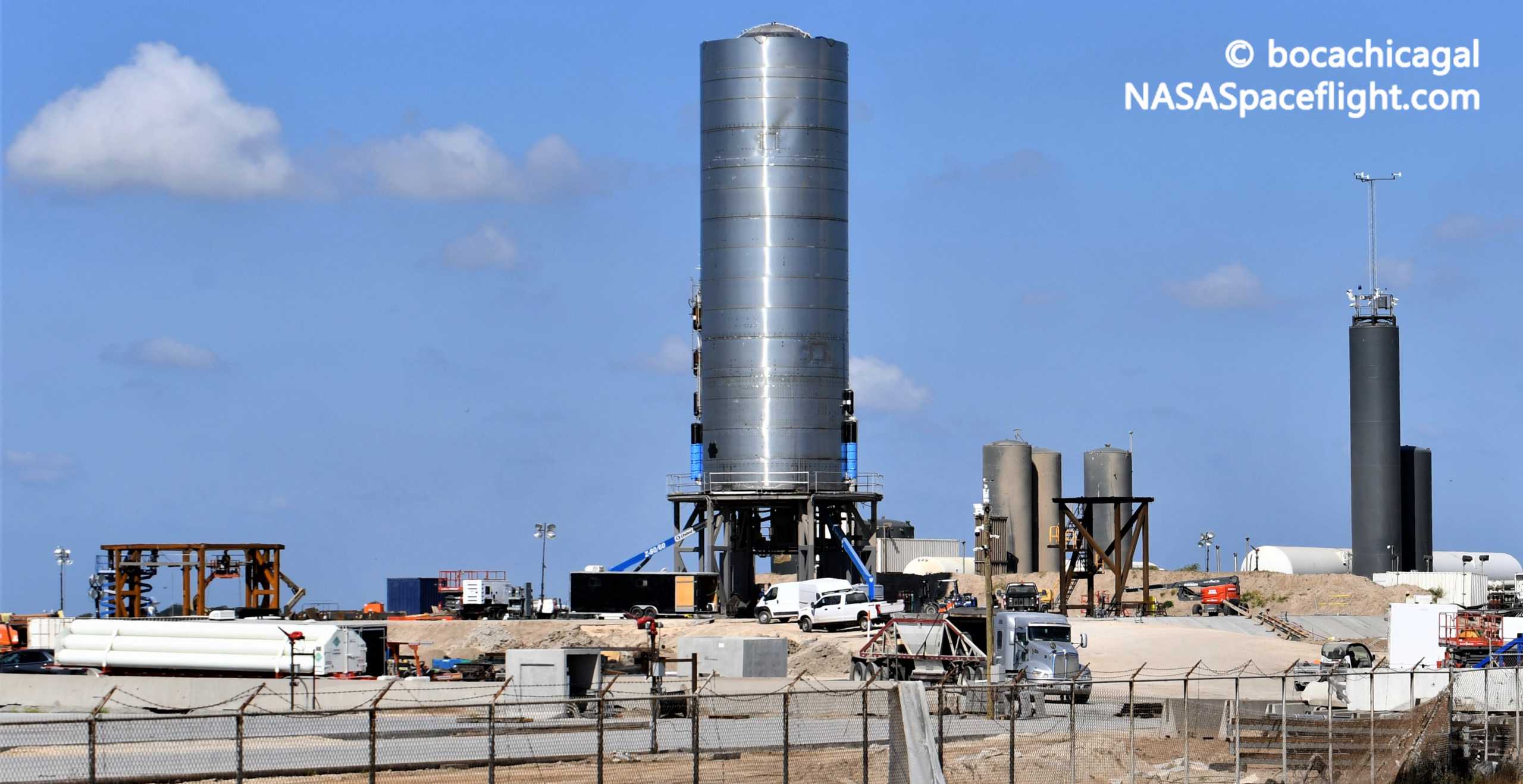
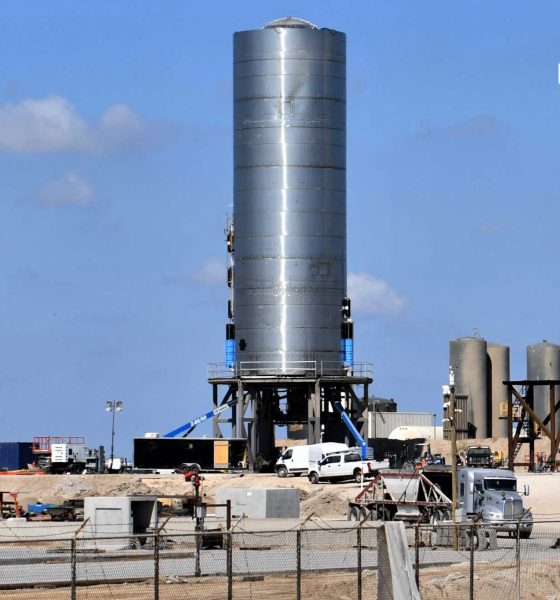
News
SpaceX Starship test plans solidify after bad weather delays hop
Around the same time SpaceX was preparing for its 100th Falcon rocket launch, bad Texas weather forced the company to abort its second Starship hop test of the month.
Since that abort, SpaceX’s near-term Starship test plans have begun to solidify, offering a clearer picture of what to expect over the next week or two. Pending better weather at its Boca Chica, Texas test facilities, Starship serial number 6 (SN6) is still first in line and has been preparing for its hop debut ever since the prototype completed a Raptor engine static fire test on August 23rd.
Measuring approximately 30m (~100 ft) tall, SN6 is a full-scale Starship tank and engine section – the bottom ~60% and business end of the reusable orbital spacecraft. Of course, SpaceX has a ways to go before Starship is actually ready for its first orbital test flight, let alone reuse after such a test flight, but the company did take its biggest step yet towards that lofty ambitions with Starship SN5’s successful August 4th hop debut.
Effectively twins, Starship SN5 and SN6 have since been expected to take turns completing “several” hops to improve SpaceX’s familiarity with Starship launch operations and work towards a smooth procedure that can be completed multiple times per day. With SN6 now scheduled to hop no earlier than 8am CDT (UTC-5), September 3rd, 29 days after SN5’s debut, SpaceX still has its work cut out for it.
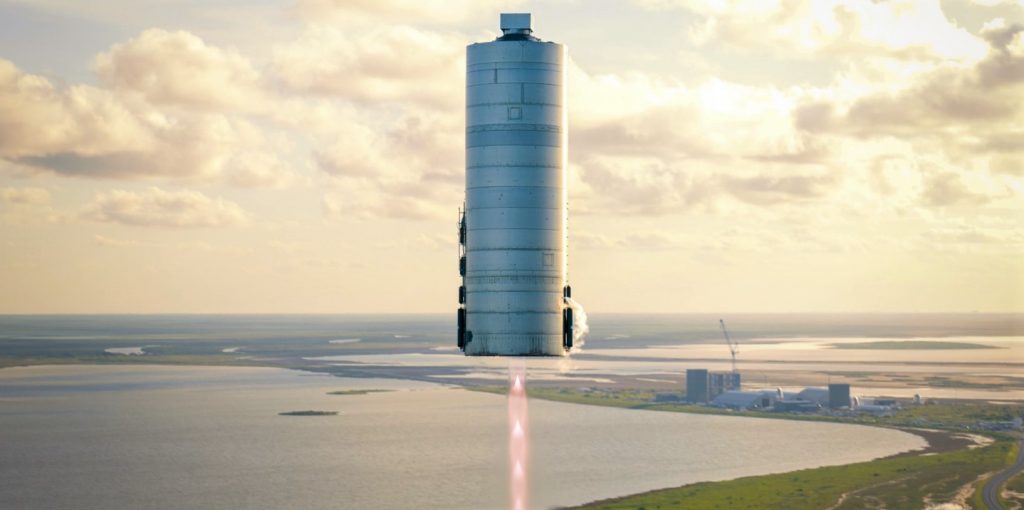
Nevertheless, SN5’s 150m (~500 ft) hop was the first flight of any kind for a full-scale Starship prototype, as well as the first use of an entirely new landing leg design and Raptor’s first flight in almost a year. In the history of rocket development, there is no precedent for launching and landing a prototype rocket and then repeating the same test with an entirely new prototype less than a month later.
Additionally, most of the 29 days since SN5’s first hop have been spent preparing Starship SN6 for a crucial “cryo proof” qualification test. Had that cryo proof been completed before SN5’s hop debut, SN6 could have been ready to fly as few as ~10 days later. That still leaves SpaceX a long ways away from multiple Starship hops per day but does offer encouragement that flight-proven Starship SN5 could be ready for its second hop not long after the pad is clear.
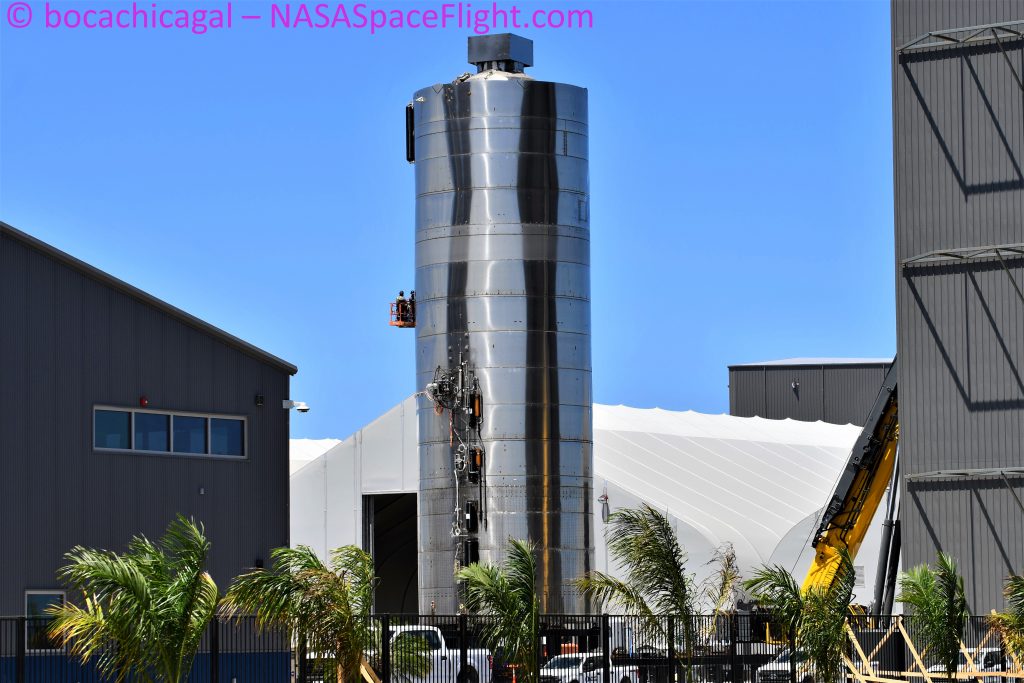
However, it appears that SpaceX instead plans to follow up SN6’s hop debut with a new ‘test tank’ meant to demonstrate an upgraded Starship “thrust puck” built out of a different steel alloy. Known as Starship SN7.1, the test will follow on the heels of a more traditional tank (SN7) that completed a record-breaking pressure test in June 2020 and proved that Starship would likely be better off with a different steel alloy.
While SN7 was a basic test tank (two domes and a few steel rings), SN7.1 adds a skirt section at its base and replaces the aft dome with a thrust dome. Likely built entirely out of a steel alloy closer to 304L than the 301 SpaceX has used for all prior Starship prototypes, that thrust dome features a new ‘thrust puck’ – the structural element Raptor engines attach to and transmit their thrust through.
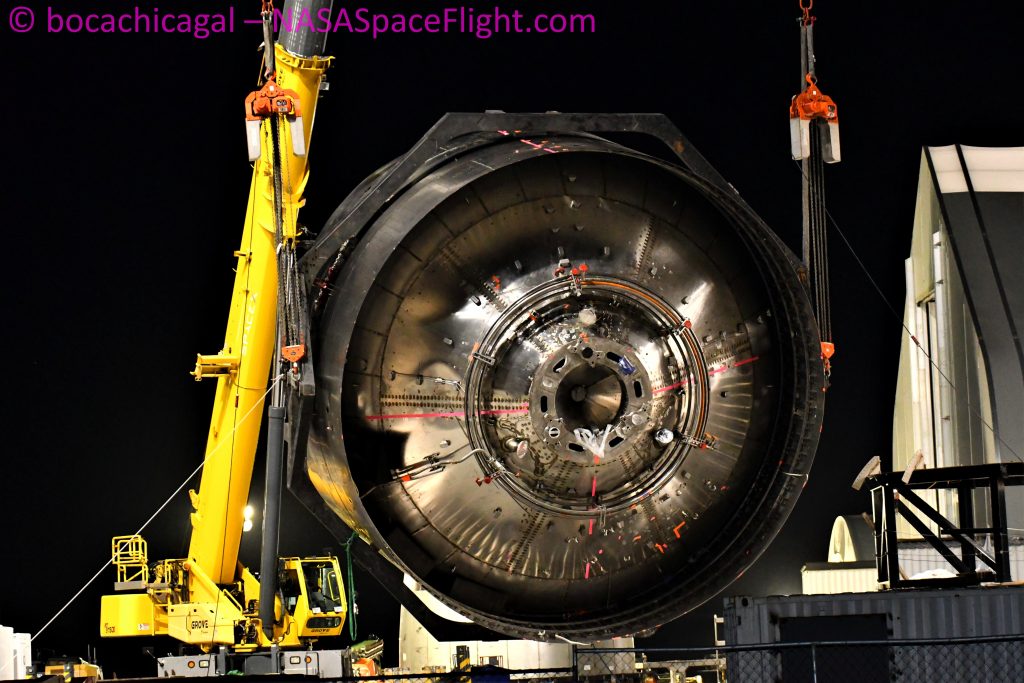
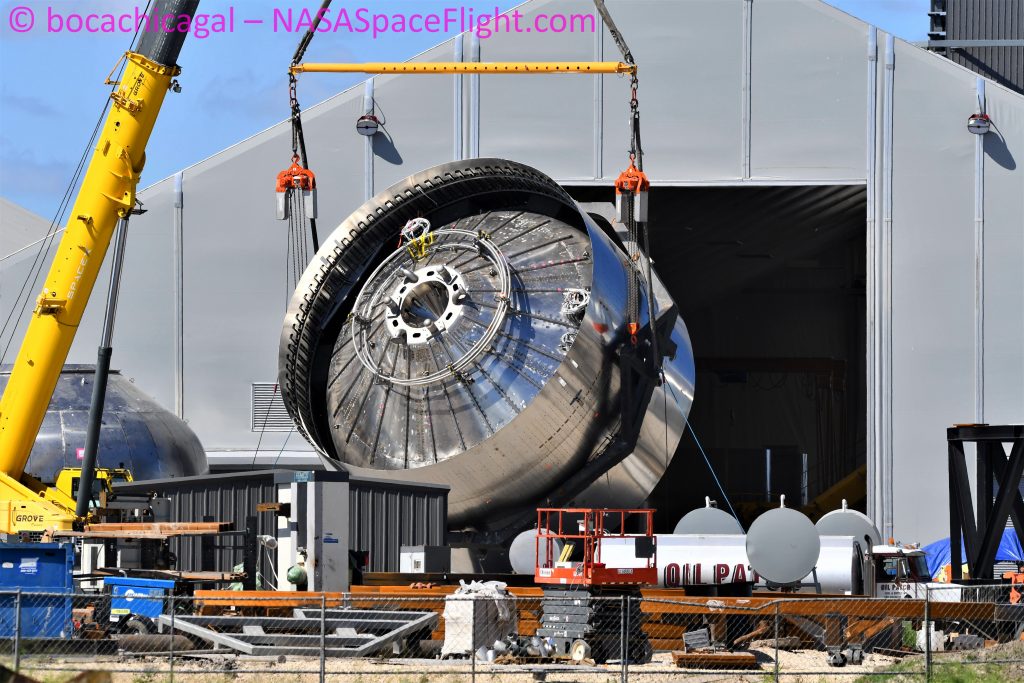
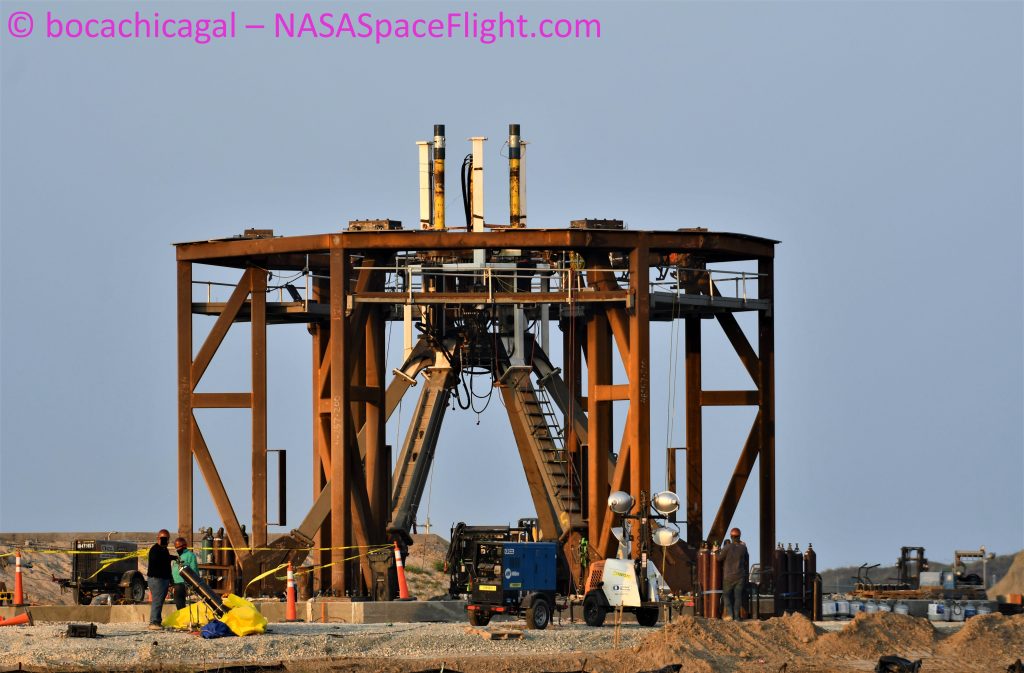
Unlike past single tank tests, SN7.1 will be put through something more like a full prototype’s cryo pressure test. SN7.1 will be installed on a launch mount, allowing its skirt clamps to firmly secure the prototype to the stand, itself secured to a concrete slab on the ground. That launch mount also allows SpaceX to install a hydraulic ram designed to mechanically simulate the thrust of 1-3 Raptor engines without the risk involved in an actual static fire. SN7.1 is scheduled to begin testing no earlier than (NET) 8 am CDT (UTC-5), September 6th – just three days after SN6’s next planned hop attempt.
Check out Teslarati’s Marketplace! We offer Tesla accessories, including for the Tesla Cybertruck and Tesla Model 3.

News
Tesla Giga Shanghai celebrates 5 million electric drive unit milestone
The milestone was celebrated by the company in a post on its official Weibo account.

Tesla China has reached another manufacturing milestone at Gigafactory Shanghai, rolling out the facility’s 5 millionth locally produced drive unit.
The milestone was celebrated by the company in a post on its official Weibo account. In its post, the Giga Shanghai team could be seen posing with the 5 millionth drive unit.
Giga Shanghai’s major benchmark
The milestone drive unit was produced at Gigafactory Shanghai, which produces the Model Y and the Model 3. In a release, Tesla China noted that its three-in-one integrated electric drive system combines the motor, gearbox, and inverter into a single compact assembly. This forms a powerful “heart” for the company’s electric cars.
Tesla China also noted that its drive units’ integrated design improves energy conversion efficiency while reducing overall weight and complexity, benefits that translate into stronger performance, improved handling, and longer service life for its vehicles.

The new milestone builds on earlier achievements at the same site. In July 2024, Tesla announced that its 10 millionth electric drive system globally had rolled off the line at the Shanghai plant, making it the first self-produced Tesla component to reach that volume.
More recently, the factory also produced its 4 millionth China-made vehicle, a Model Y L. The factory has also continued hitting global production milestones, rolling out Tesla’s 9 millionth EV worldwide late last year, with the landmark vehicle being a Tesla Model Y.
Tesla China’s role
Construction of Giga Shanghai began in January 2019, with production starting by the end of that year. This made it the first wholly foreign-owned automotive manufacturing project in China. The facility began delivering Model 3 vehicles locally in early 2020 and added Model Y production in 2021. The plant is now capable of producing about 1 million vehicles annually.

Throughout 2025, Giga Shanghai delivered 851,732 vehicles, representing a 7.08% year-on-year decline, according to data compiled by CNEVPost. Even so, recent months showed renewed momentum.
In December alone, Tesla China recorded wholesale sales of 97,171 vehicles, including domestic deliveries and exports, making it the company’s second-best monthly total on record, per data from the China Passenger Car Association. Retail sales during December reached roughly 94,000 units, up about 13% year over year.
Investor's Corner
Tesla price target boost from its biggest bear is 95% below its current level

Tesla stock (NASDAQ: TSLA) just got a price target boost from its biggest bear, Gordon Johnson of GLJ Research, who raised his expected trading level to one that is 95 percent lower than its current trading level.
Johnson pushed his Tesla price target from $19.05 to $25.28 on Wednesday, while maintaining the ‘Sell’ rating that has been present on the stock for a long time. GLJ has largely been recognized as the biggest skeptic of Elon Musk’s company, being particularly critical of the automotive side of things.
Tesla has routinely been called out by Johnson for negative delivery growth, what he calls “weakening demand,” and price cuts that have occurred in past years, all pointing to them as desperate measures to sell its cars.
Johnson has also said that Tesla is extremely overvalued and is too reliant on regulatory credits for profitability. Other analysts on the bullish side recognize Tesla as a company that is bigger than just its automotive side.
Many believe it is a leader in autonomous driving, like Dan Ives of Wedbush, who believes Tesla will have a widely successful 2026, especially if it can come through on its targets and schedules for Robotaxi and Cybercab.
Justifying the price target this week, Johnson said that the revised valuation is based on “reality rather than narrative.” Tesla has been noted by other analysts and financial experts as a stock that trades on narrative, something Johnson obviously disagrees with.
Dan Nathan, a notorious skeptic of the stock, turned bullish late last year, recognizing the company’s shares trade on “technicals and sentiment.” He said, “From a trading perspective, it looks very interesting.”
Tesla bear turns bullish for two reasons as stock continues boost
Johnson has remained very consistent with this sentiment regarding Tesla and his beliefs regarding its true valuation, and has never shied away from putting his true thoughts out there.
Tesla shares closed at $431.40 today, about 95 percent above where Johnson’s new price target lies.
News
I subscribed to Tesla Full Self-Driving after four free months: here’s why
It has been incredibly valuable to me, and that is what my main factor was in considering whether to subscribe or not. It has made driving much less stressful and much more enjoyable.

I have been lucky enough to experience Tesla Full Self-Driving for the entire duration of my ownership experience for free — for four months, I have not had to pay for what I feel is the best semi-autonomous driving suite on the market.
Today, my free trial finally ran out, and I had two choices: I could go without it for a period until I felt like I absolutely needed it, or I could subscribe to it, pay $99 per month, and continue to experience the future of passenger transportation.
I chose the latter, here’s why.
Tesla Full Self-Driving Takes the Stress Out of Driving
There are a handful of driving situations that I don’t really enjoy, and I think we all have certain situations that we would just rather not encounter. This is not to say that I won’t ever experience them as someone who has driven a car for 15 years (it feels weird saying that).
I don’t love to drive in cities; I really don’t like driving on I-695 on my way to Baltimore, and I truly hate parallel parking. All three things I can do and have done, all three within the past few weeks, too.
It takes all the stress out of city driving pic.twitter.com/q0SPPrH4HU
— TESLARATI (@Teslarati) December 4, 2025
However, if I can avoid them, I will, and Tesla Full Self-Driving does that for me.
Tesla Full Self-Driving Eliminates the Monotony
I drive to my alma mater, Penn State University, frequently in the Winter as I am a season ticket holder to Wrestling and have been for 16 years now.
The drive to State College is over two hours and over 100 miles in total, and the vast majority of it is boring as I travel on Rt 322, which is straight, and there is a lot of nature to look at on the way.
I am willing to let the car drive me on that ride, especially considering it is usually very low traffic, and the vast majority of it is spent on the highway.
The drive, along with several others, is simply a boring ride, where I’d much rather be looking out the windshield and windows at the mountains. I still pay attention, but having the car perform the turns and speed control makes the drive more enjoyable.
Tesla Full Self-Driving Makes Navigating Easier
Other than the local routes that I routinely travel and know like the back of my hand, I’ve really enjoyed Full Self-Driving’s ability to get me to places — specifically new ones — without me having to constantly check back at the Navigation.
Admittedly, I’ve had some qualms with the Nav, especially with some routing and the lack of ability to choose a specific route after starting a drive. For example, it takes a very interesting route to my local Supercharger, one that nobody local to my area would consider.
But there are many times I will go to a new palce and I’m not exactly sure where to go or how to get there. The Navigation, of course, helps with that. However, it is really a luxury to have my car do it for me.
To Conclude
There was no doubt in my mind that when my Full Self-Driving trial was up, I’d be subscribing. It was really a no-brainer. I am more than aware that Full Self-Driving is far from perfect, but it is, without any doubt, the best thing about my Tesla, to me.
It has been incredibly valuable to me, and that is what my main factor was in considering whether to subscribe or not. It has made driving much less stressful and much more enjoyable.
🚨 How I’ve gotten Tesla Full Self-Driving for free…until now
Watch me subscribe to Tesla FSD! https://t.co/bjK7EEOptR pic.twitter.com/cs5CmN5PdJ
— TESLARATI (@Teslarati) January 7, 2026








